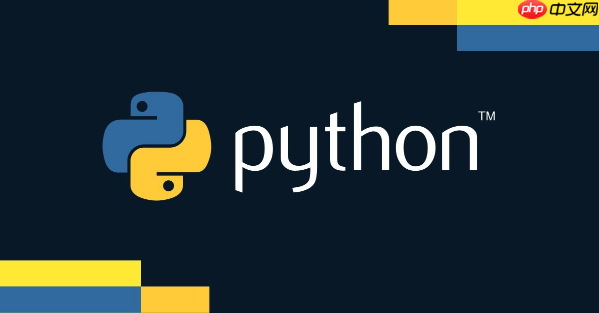自定义Python上下文管理器需实现__enter__和__exit__方法,前者在进入with块时获取资源并返回对象,后者在退出时释放资源并可处理异常;通过类或contextlib.contextmanager装饰生成器函数均可创建;文件操作中with open()自动关闭文件是典型应用;__exit__接收异常信息,返回True可抑制异常;相比try...finally,上下文管理器更优雅、模块化、易复用。

Python上下文管理器,简单来说,就是用
with
class MyContextManager:
def __enter__(self):
# 获取资源,例如打开文件、建立连接
print("Entering the context")
return self # 返回的对象会在with语句中被赋值给 as 后面的变量
def __exit__(self, exc_type, exc_val, exc_tb):
# 释放资源,例如关闭文件、断开连接
print("Exiting the context")
if exc_type:
print(f"Exception caught: {exc_type}, {exc_val}")
return True # 返回True表示抑制异常,否则异常会继续抛出
def some_operation(self):
print("Performing an operation within the context")
# 使用上下文管理器
with MyContextManager() as manager:
manager.some_operation()
# raise ValueError("Something went wrong") # 取消注释可以测试异常处理
print("Outside the context")
如何自定义一个Python上下文管理器?
要自定义上下文管理器,你需要定义一个类,并实现
__enter__
__exit__
__enter__
with
with
as
__exit__
with
上下文管理器在文件操作中的应用?
立即学习“Python免费学习笔记(深入)”;
最常见的例子就是文件操作。使用
with open(...)
with open("my_file.txt", "w") as f:
f.write("Hello, world!")
# 文件会自动关闭这比手动调用
f.close()
如何处理上下文管理器中的异常?

迷你天猫商城是一个基于Spring Boot的综合性B2C电商平台,需求设计主要参考天猫商城的购物流程:用户从注册开始,到完成登录,浏览商品,加入购物车,进行下单,确认收货,评价等一系列操作。 作为迷你天猫商城的核心组成部分之一,天猫数据管理后台包含商品管理,订单管理,类别管理,用户管理和交易额统计等模块,实现了对整个商城的一站式管理和维护。所有页面均兼容IE10及以上现代浏览器。部署方式1、项目
 0
0

__exit__
exc_type
exc_val
exc_tb
with
None
__exit__
True
False
None
contextlib
contextlib
contextlib.contextmanager
from contextlib import contextmanager
@contextmanager
def my_context():
# __enter__ 部分
print("Entering the context")
try:
yield # yield 语句将代码分成 __enter__ 和 __exit__ 两部分
finally:
# __exit__ 部分
print("Exiting the context")
with my_context():
print("Inside the context")使用
contextmanager
上下文管理器与try...finally语句的区别是什么?
try...finally
try...finally
以上就是Python怎么实现一个上下文管理器_Python上下文管理器协议实现的详细内容,更多请关注php中文网其它相关文章!

每个人都需要一台速度更快、更稳定的 PC。随着时间的推移,垃圾文件、旧注册表数据和不必要的后台进程会占用资源并降低性能。幸运的是,许多工具可以让 Windows 保持平稳运行。

Copyright 2014-2025 https://www.php.cn/ All Rights Reserved | php.cn | 湘ICP备2023035733号